BS5609 Section 3 Compliance: Top Printers for Avery GHS Labels
BS5609 compliance overview
BS5609 compliance is an important safety component for businesses that manufacture, sell, or ship chemicals overseas. For chemicals that you use in your workplace, you may not need to worry about BS5609 compliance. In that case, you should take a closer look at general GHS requirements and your company’s secondary container labels to ensure chemical safety compliance.
In the most basic terms, you use BS5609 labels (and the information on them) to identify potentially hazardous chemicals in case of accidents during overseas shipping. Tests need to show that these labels can stay intact, legible, and adhered to a chemical container for at least three months in the ocean.
Section 3 specifically covers how well the printed information on the labels stays legible. Consequently, matching the right labels to the right printer is crucial for BS5609 Section 3 compliance. By the end of this article, you’ll know how to choose the right labels and printer to create your own GHS labels that are compliant with BS5609 Section 3.
If you already know what type of printer you have, you can navigate directly to Avery UltraDuty® label products that are Section 3 certified with approved printers.
- Approved laser printers for laser-printable Avery GHS labels
- Approved pigment inkjet printers (and ink cartridges) for inkjet-printable Avery GHS labels
BS5609 certification overview
The whole point of BS5609 certification is to prove that your GHS labels will stay on and be legible if they accidentally end up in the ocean. This allows clean-up crews to identify the chemicals and assess any potential hazards. Naturally, the testing simulates marine conditions. This can include rolling labels in sand and seawater, as well as exposing them to salt spray and sunlight. It also involves submerging them in seawater for 90 days.
In order for a label supplier or printer to claim their labels are BS5609-compliant, they must have them tested. Moreover, they must have the tests done by an accredited third party, such as Smithers. The International Standards Organization (ISO) recognizes Smithers testing and calibration laboratories, eliminating the need for further testing for international compliance.
More specifically, BS5609 Section 2 testing checks to make sure that the actual label material and adhesive will stay intact and in place in the ocean. All Avery UltraDuty GHS labels are certified for BS5609 Section 2 compliance. Labels must meet Section 2 before Section 3 testing can take place. BS5609 Section 3 is meant to make sure that the printed information stays on the label.
Why the right printer is critical for BS5609 Section 3 compliance
Making sure that what you print on GHS labels stays legible in marine conditions has a few components. Firstly, as mentioned previously, the labels and adhesive must be durable and strong enough to last submerged in seawater for 90 days. Only if the labels meet those requirements can you have them tested further. Then the accredited third-party tester can test the ink and printing method you use on that specific material.
The first and most important thing to remember is that you should always match the type of printer you have to the type of labels you want to use. Laser-compatible labels printed on an inkjet printer will not meet BS5609 standards, and vice versa. That’s just good sense for printing in general, and we’ve discussed matching your printer and labels before.
If you adhere to that one rule, all of your printing projects will turn out better. However, the BS5609 certification process is very meticulous. For labels to be considered BS5609 Section 3-certified, they have to be printed with the specific printers and ink that were tested. Luckily, we’re pretty meticulous too, and we keep a comprehensive record of standard printers you can use to print Avery UltraDuty GHS labels for BS5609 compliance.
Additionally, you can create GHS labels online and then have them custom-printed on our UltraDuty label material by the sheet or by the roll. When you order custom-printed UltraDuty labels by the roll through the Avery WePrint® service, they are always certified for BS5609 Section 3.
How to choose the best labels for BS5609 compliance
To choose the best labels for BS5609 compliance, start with what kind of printer you have. Is it a laser printer or a pigment inkjet printer? All Avery UltraDuty GHS labels are Section 2-certified. The labels themselves are waterproof and resistant to chemicals, abrasion, and tearing. So all you have to do is make sure you’re using an approved printer and ink cartridge (when applicable). Simply navigate to the section you need, then look for your printer’s make and model to match up with Avery GHS label product numbers.
Approved printers for Avery GHS labels and BS5609 compliance
Laser printers and Avery GHS labels for BS5609 compliance
Achieve BS5609 Section 3 compliance by using the approved laser printers below. Make sure you are using the correct laser-printable Avery GHS label product for your printer brand, model, and series. Even if you don’t need labels to stay perfect in marine conditions, remember that you still need to make sure your printer and labels match. Remember that the best way to make sure that the ink on your labels doesn’t smear or smudge is to always match the label type to the type of printer you have.
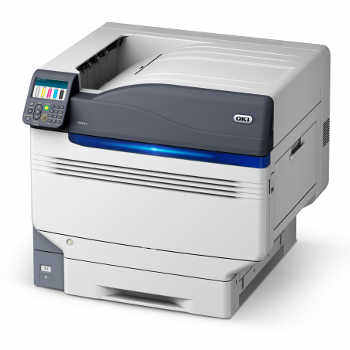
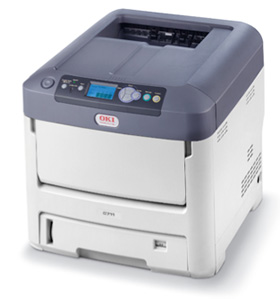
BS5609 pigment-based inkjet printers and Avery GHS labels
Recall that BS5609 Section 3 testing tests the overall print stability, which includes the ink and the printing method. When pigment inkjet GHS labels are certified for Section 3, both the printer and the ink cartridge are tested. In order to make sure your labels are compliant, you will have to make sure you are using an approved printer make or model and the ink cartridge that was used during certification.
Use these pigment inkjet printers with the approved ink cartridges to achieve BS5609 Section 3 compliance with the following UltraDuty GHS labels: 60521, 60522, 60523, 60524, 60525, 60526.
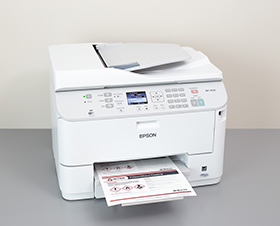
Epson® WorkForce Pro: WP-4533, WP-4520, WP-4530, WP-4540, WP-4590, WP-5110, WP-5620, WP-5690, WP-4630, WP-4640
Approved ink cartridges: 786, 786XL, 786XXL, Epson 676XL
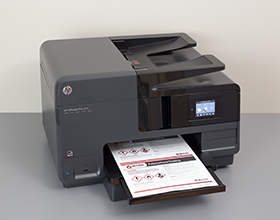
HP® OfficeJet Pro: 8000, 8100, 8500, 8600, 8610, 8620, 8630, 251dw, 276dw
Approved ink cartridges: 951, 951XL, 940, 940XL, 950, 950XL
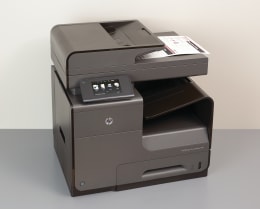
HP® OfficeJet Pro: X476, X451, X551, X576
Approved ink cartridges: 970, 970XL, 971, 971XL
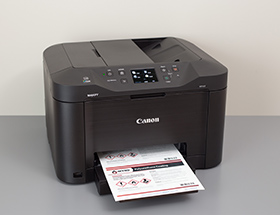
Canon® Maxify: iB4020, MB5020, MP5320
Approved ink cartridges: PGI-2200, PGI-2200XL

HP® PageWide Pro, HP® PageWide Enterprise, and HP® PageWide Managed: All models
Approved ink cartridge families: HP 972, 913, 973, 974, 975, 981, 990, 991, 992, 993, 982
FAQ: Can I use a standard color laser or inkjet printer to print GHS labels?
There are times you may not require BS5609 Section 3 certification, but you still need waterproof labels. If you are not shipping chemicals in marine environments, then all you need to do is match the label type to the printer. Why is that so important? For one thing, matching labels and printers is the best way to make sure the ink on your labels doesn’t smear or smudge. Additionally, using the wrong labels with a laser printer can even melt them. This is because laser printers use heat and inkjet printers use liquid ink.
Basically, the main difference between any laser and inkjet printer is the type of ink they use and how it dries. Like all inkjet printers, pigment inkjet printers spray wet ink from tiny nozzles directly onto paper or special inkjet label sheets. These sheets absorb the ink, allowing it to dry quickly. Pigment inkjet printers use tiny colored particles suspended in liquid, unlike other inkjet printers where the ink is fully dissolved. However, the basic concept of wet ink is the same for all inkjet printers.
On the other hand, laser printers use “dry ink” along with static electricity and heat. They use static electricity to move toner powder (the “dry ink”) onto the label material or paper. Then, they apply heat to set the print. If you put non-laser labels through a laser printer, there is a chance they will melt. Conversely, laser-printable products are not designed to absorb ink, so the ink will always smear and smudge.
BS5609 Section 3 compliance summarized
BS5609 compliance is essential for safely shipping chemicals overseas, ensuring labels remain intact and readable after months in the ocean. This helps identify potential hazards during accidents. To comply with BS5609 Section 3, always use the right labels for your printer—laser-compatible labels for laser printers and specific labels for pigment inkjet printers.
Using approved printers for Avery GHS labels is key to preventing smudging and ensuring durability. Start by identifying your printer type, then select the appropriate Avery UltraDuty labels designed for it. This ensures your labels meet BS5609 Section 3 compliance standards. For added convenience, you can also order custom-printed UltraDuty labels through Avery WePrint, which are guaranteed to be BS5609 Section 3 certified, ensuring safe and clear labeling of your chemical shipments.
Read more articles about using labels, signs, and tags for workplace safety, and join the safety conversation on our LinkedIn page.
Please note, the contents of this article and related articles on avery.com are for informational purposes only, are general in nature, and are not intended to and should not be relied upon or construed as a legal opinion or legal advice regarding any specific issue or factual circumstance.